Debrah's Blog
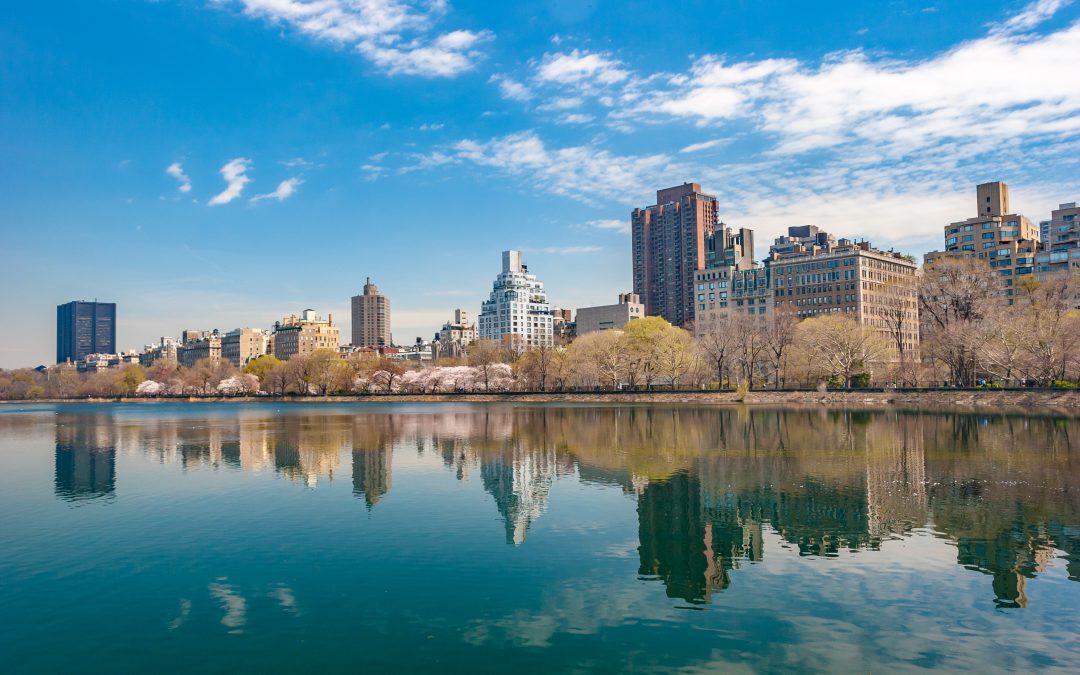
How The Central Park Conservancy Saved a New York Landmark
Central Park is one of the best places in Manhattan to enjoy the changing seasons, go running (or ice skating), and experience world class cultural events. A visit to Central Park is a quintessential New York experience: ask any tourist about their itinerary, and it is sure to make the short list. But do tourists (or locals) know about the not-for-profit conservancy that keeps Central Park beautiful?
The Central Park Conservancy raises about 75% of the park’s annual budget, which makes them responsible for the essential work it takes to keep the park an iconic, safe, and lively place. But surprisingly, this was not always the case.
The Central Park Conservancy was formed in 1980 during a time when much of New York City’s public spaces weren’t as pristine. In fact, a New York Times story published on May 26, 1977 reported, “In Central Park, the once‐green lawn of the Sheep Meadow is wearing away, gradually becoming a dust bowl with overuse.” Continued the article, “At the Bethesda Fountain, drugs are sold routinely, and the Duck Pond each night becomes a receptacle for beer and soda cans.”
During this dark time when Belvedere Castle was tagged with graffiti and its meteorological equipment routinely smashed or stolen, things were very different than they are today. Central Park was considered a dangerous place to walk alone, especially at night.
“Believe it or not,” says Elizabeth W. Smith, President and CEO of the Conservancy, “Central Park was a place not to go.” She recalls carrying the mandatory pepper spray in her purse for her rare outings into the Park. “Actually going to Central Park wasn’t on anyone’s radar.” The design elements that make the park a peaceful refuge from the city — secluded woodlands, hidden coves, paths that curve and dip from sight — also made the park hard to protect from crime.
In other words, things were stacked against the Conservancy, but it came out triumphant.
In 1980, a group of concerned New Yorkers decided enough was enough and banded together to improve the park.
So where did they start? Recollects former president and CEO of the Central Park Conservancy, Doug Blonsky, it was by “re-sodding the Sheep Meadow, restoring the Dairy, planting American Elms, getting rid of graffiti, and fixing broken benches.”
He added, “These early successes proved we could take on bigger projects and we did.” In 1983, 1,500 of the iconic luminaire lamp posts were installed to make the park safer.
In 1985, after a three-year study, The Conservancy published Rebuilding Central Park: A Management and Restoration Plan, which was basically a 15-year plan for the recovery of Central Park. And in keeping with their projections, in 1987, the Bethesda Terrace was reopened after an extensive four-year restoration, the success of which exemplified the usefulness of long term planning and organization.
Central Park is an ongoing success story because it is indeed ongoing. For almost 40 years the Park Conservancy has been very organized and specific in how it utilizes charitable and city funds to handle the massive task of upkeeping the 840-acre park.
Addressing ongoing plans for the Park, Smith stated, “Now that the Park is largely restored — although its extraordinarily heavy use will always demand significant investment year after year — our challenge is: How do we create a model of sustainability to ensure that Central Park always stays beautiful, and that we continue to innovate and develop best practices in park management? And how do we send this message with a sense of urgency?”
It’s a lot to juggle, but it’s worth it to keep America’s most iconic big city park as majestic as it was when it was created out of farmland 160 years ago.

Charity Spotlight: The Jewish Museum
The Charatan Family Foundation has long fortified local nonprofits that support the arts, culture, and distinguished Jewish initiatives. The Jewish Museum checks all of those boxes, making it a natural choice for our charitable investment. Located along New York City’s Museum Mile, The Jewish Museum has been a beloved destination since its founding in 1904. It was the first institution of its kind in the United States, and is one of the oldest Jewish museums in the world.
Through its extensive collection of artwork, ceremonial objects and artifacts, The Jewish Museum articulates a collective Jewish experience that’s inclusive of many voices and informed by many viewpoints. The collection spans countries across the globe and stretches back through more than 4,000 years, from the ancient to the contemporary. The Jewish Museum is arguably the most ambitious exploration of Jewish culture and identity on display today, featuring seminal exhibitions, a comprehensive educational program, and interactive features that engage visitors of all ages and backgrounds.
One of the largest and most important collections in the world, the Jewish Museum currently contains over 30,000 objects, which include paintings, sculptures, works on paper, photography, installations, media, archeological artifacts, antiquities, and ceremonial objects. Excluding Israeli museums, The Jewish Museum houses the largest collection of Jewish art and cultural artifacts in the world.
Current exhibits include the cross-disciplinary, contemporary artwork of Camille Chaimowicz; the Expressionist paintings of Chaim Soutine; and the paintings of contemporary artist Eliza Douglas. There’s also Archaeology Zone: Discovering Treasures from Playgrounds to Palaces, an interactive exhibition that allows children to act as archaeologists and analyze artifacts for clues that can place the objects in their appropriate historical time, place and context. The Museum’s ongoing exhibition, Scenes from the Collection, features over 600 pieces of art and artifacts, many of which are on view for the very first time. For this, the building’s entire third floor is used to showcase Jewish art and artifacts together, in the hopes of highlighting Jewish values and affirming how those convictions are shared among people of all faiths and backgrounds around the world.
In the Museum’s careful efforts to show the diversity of Jewish experience, the collection is divided into seven different sections that reveal how art and the presentation of history are shaped by context and perspective. Together, these seven elements speak to the many strands of Jewish tradition, culture, spirituality, and history, harnessing multiple perspectives on what it means – and has meant throughout history – to be Jewish. Artists include Diane Arbus, Salvador Dali, Gustav Klimt, Annie Leibovitz, Pablo Picasso, Henri de Toulouse-Lautrec, Wim Wenders, Jonathan Adler, Miriam Schapiro, Alice Aycock, and many, many others. Since the 1960s the Museum has actively engaged in the contemporary art scene. Its exhibition Primary Structures is credited with helping to launch the Minimalist art movement of the 1960s and 1970s.
In addition to its exhibitions and collections, the Museum holds a range of events, including lectures and conversations, author talks, film screenings, artist-led studio programs, performances and concerts, and the New York Jewish Film Festival, which it launched in 1992.
In a time when so much rhetoric and hateful speech has been wielded in a divisive attempt to magnify and demonize our differences, The Jewish Museum is an important institution that celebrates those differences within the context of their universality, reminding us of our humanity and the similarities at our core. At the Charatan Family Foundation, we believe in supporting organizations that foster stronger communities, and The Jewish Museum continues to contribute to our city’s vibrancy, while influencing Jewish dialogue, discourse and unity around the world.
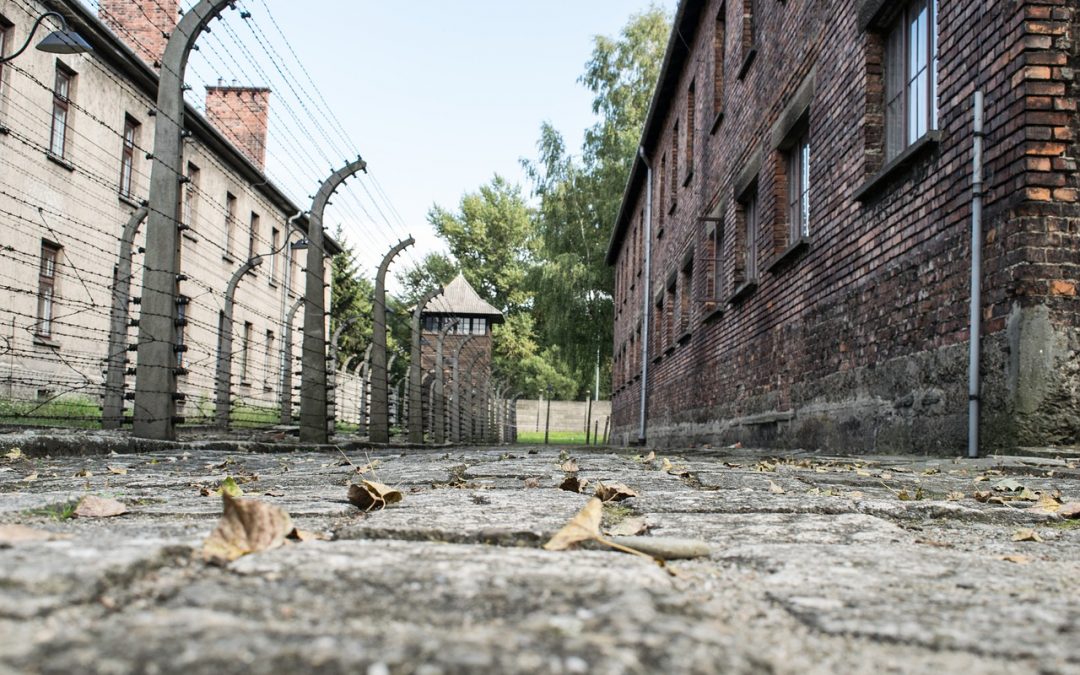
Following My Roots to the Ukraine and Poland
This spring, I went on a trip to the places where my parents were born. Along with my family and other passionate travelers, I explored the Ukraine and Poland on a remarkable pilgrimage made possible by The United States Holocaust Memorial Museum. The trip they sponsored was attended by about 40 people in late May to early June. It was a once-in-a-lifetime journey that I won’t soon forget.
The children of immigrants and refugees don’t always get to explore their roots so physically, emotionally, and intimately. As the daughter of Holocaust survivors, it was a privilege to help organize and take part in such an opportunity this year. I saw where my mom and dad were raised, where they lived, and in the case of my father, persecuted and hidden from Nazis during WWII. It was a journey back in time that brought to light the pain and passion of my ancestors that I carry in my heart to this day.
My father was from a town called Lvov, once a famous and populous city in Poland. Now Lviv, it’s part of the Ukraine, where it is considered a little dangerous and welcomes few visitors. We were able to find the neighborhood my dad lived in and, somewhat astonishingly, visit the actual house he was born in as well. Later, he would suffer in a concentration camp called Janowska, which after all this time is used as a prison (we were unable to visit). Considering that in all concentration camps in Poland are memorial sites, the fact that this one is still used is disturbing.
Then we went to where my mother was born: a bucolic, beautiful town called Busk. My mother’s entire family lived in this village; it was incredible to see and experience many of the same things she grew up seeing and experiencing.
I should also mention that there was a Polish family that hid my father and his family during the war. He was housed in a bunker on their farm, an act that saved his life as well as his parents, brother, and three friends. My uncle even wrote about this experience in a book: Eye to Eye: A Memoir of the Nazi Holocaust in Poland.
I invited one of the great grandchildren from this family to come on the trip and was delighted when they joined us for part of it. I hoped we could see the bunker firsthand and understand where my father and his family were sheltered. Alas, the world is a different place: nobody could find the bunker.
That was an extraordinarily meaningful part of the trip for me and my family, and the first part of our journey.
After our visit to Ukraine, we went to Poland and visited Warsaw and Krakow. My father spent time in Krakow after the war, and his brother gave me some addresses of nightclubs and places they lived and visited. We were able to retrace his steps and relive his time enjoying life after his harrowing experience during the war.
My uncle also gave me an address in Lviv so that I could find a factory called the Schwartz factory where my father’s sister was killed. She was the only sibling not hidden in the bunker, and unfortunately didn’t make it. I went to where that factory was, but there was something going on militarily so I couldn’t get in.
In total, we visited five or six concentration camps/death camps on this trip. This was about as depressing as you’d expect. For others it was more depressing than it was for me; I have lived with it my whole life as the daughter of survivors and understood their struggle and its aftermath well. When you’ve never lived with it and see it, it’s mind-blowing.
After we saw all of this in Krakow, I met up with a man named Jonathan Ornstein who runs the JCC (Jewish Community Center) there. A Jewish kid from Long Island now in his 40s, Jonathan met us in Krakow and shed a whole new light on the history and legacy of our Jewish heritage. We were fed delicious homemade food which we enjoyed partaking in with our hosts. They talked about growth and renewal and showed us the beauty of Judaism and life more generally after so much pain.
One thing Jonathan said that I found interesting was that often visitors will walk in the JCC and reveal that they are Jewish but didn’t know it. For instance, one Jewish woman was given away as a child to a Catholic couple after her parents died, which was not uncommon at the time. She was told never to say that she was Jewish, but at age 80 finally shared this information with her granddaughter. The granddaughter didn’t know what to do, so she went to the JCC. With the danger associated with Judaism lifted and youngsters going back to their roots, Jewish life is experiencing rejuvenation, a miraculous occurrence for our faith and heritage. It was amazing to go to the JCC and hear these stories.
This trip was moving in countless ways and I consider myself blessed to have been able to share it with family and friends. I am also grateful to the US Holocaust Memorial Museum for making it possible for us to travel with such purpose — a purpose I will keep close to my heart for years to come.
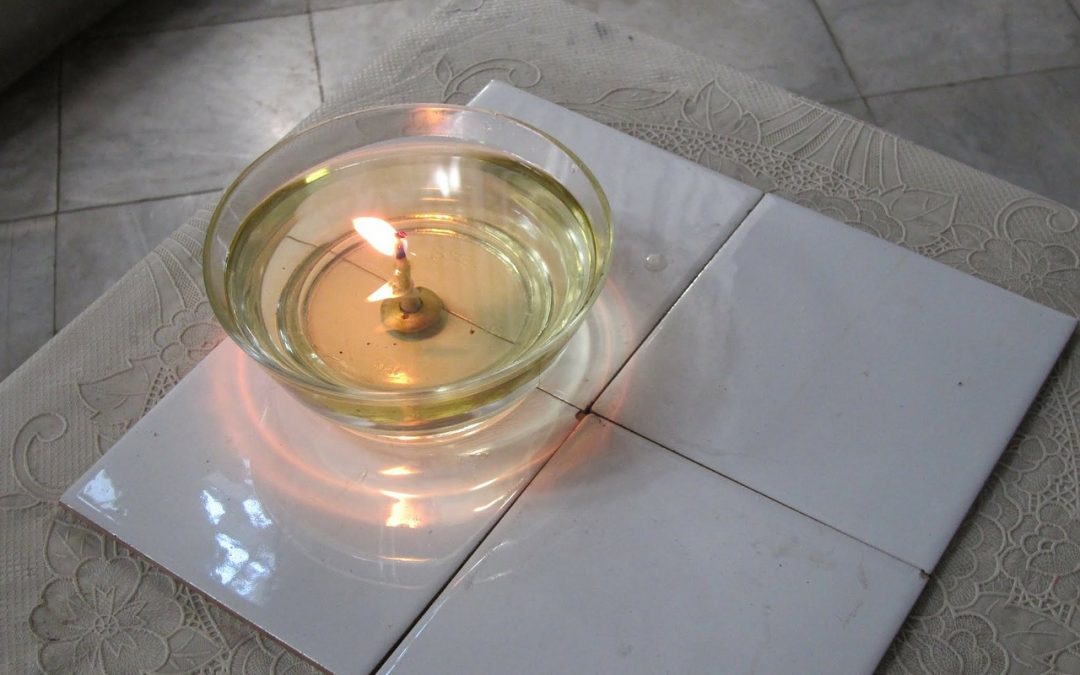
Charity Spotlight: Park East Synagogue
Synagogues have always served a larger role in our communities than mere places of worship. They are sites for neighbors to gather, share experiences, celebrate traditions, educate one another, engage in activism, and so much more.
New York City is home to a bevy of outstanding synagogues, but perhaps none is better known than the famous Park East Synagogue. This is the kind of place from which politicians deliver their remarks. The kind of place whose rabbi of more than 50 years, Rabbi Arthur Schneier, was knighted by the Roman Catholic Church to honor his work promoting world peace and religious freedom. The kind of place inclusive to all people seeking spiritual growth, regardless of their degree of observance, knowledge of Jewish faith or traditions, and affiliation. But perhaps most impressive is its focus on the community’s children, which manifests in an abundance of youth programs. And not just any youth programs, either. These are the youth programs that dreams are made of.
First and foremost is its school, Park East Day School. Founded over 25 years ago by Rabbi Arthur Schneier, the school has served students from preschool to eighth grade in a nurturing environment that promotes Jewish, humanistic values in an academically rigorous environment. The school features a well-rounded curriculum, rich with STEM offerings and religious studies, but also intent on providing ample exposure to athletics and the arts, including visual art, dance, vocal music, and drama.
And that’s just the beginning. The synagogue runs Early Childhood summer programs, classes in Hebrew language and Jewish heritage classes through its Youth Enrichment Center, as well as trips into the city and beyond, including a trip to the Jewish Children’s Museum in Brooklyn. The center couches its educational pursuits between an exciting array of parties, carnivals, art projects, presentations, and even cruises. None of these programs aim to expose children to hours of rote memorization or mind-numbing lectures. Quite the opposite. Each offering is designed to appeal and educate by immersive, playful measures.
Park East is invested in shaping children’s shabbat experiences into memorable, enjoyable events. While adults worship in the main sanctuary, children attend the famous children’s service, which is held every shabbat and holiday. Created by Toby Einsidler, the inspirational program focuses on prayers and songs for shabbat, and portions of the Torah that can be examined through the lens of Jewish values. There are also art projects, lunch, games, and activities.
Children from Kindergarten through 6th grade have the option of joining the Junior Congregation. Participants rotate leading activities and delivering Parsha, which is followed by Parsha Trivia, as well as activities that may include Let’s Make a Deal, Minute to Win It, Match Game, Dress Up Esther, and so many others (including fun prizes). When children need to recharge, there’s the Shabbat Game Room for a variety of sports and popular gym games. Children can even join the youth group to partake in snowtubing, rock climbing, bowling, and more.
Park East is remarkable for the breadth of its many youth offerings, as well as the way in which the material is presented. All of Park East’s programs show a commitment to community-building and innovative education, meaning the learning is always fun and meaningful. It’s so refreshing to witness the way Park East makes Jewish children feel at home in their own skins and imparts to them a sense of pride. Whether these children are being shaped by poetry, music, game show-style trivia games, or ice-cream socials, it’s always enjoyable and it’s always a celebration, which seems like an appropriate and preferable approach to immerse a child into their own faith and heritage.
Park East Synagogue is so many things to our community and the city at large: a cultural icon, an architectural landmark, an eclectic congregation, and the scene for countless international and communal actions and initiatives. That is why the Charatan/Holm Family Foundation is proud to support its great work on all fronts. But beyond its papal visits, its lecture series with bestselling authors and foreign ambassadors, its world-famous rabbi knight that is both a Holocaust survivor and an active proponent of using religion to unite the world, beyond all of this, there are children who are feeling content and inspired as a result of its great work. And that, more than anything, will positively shape our collective future.
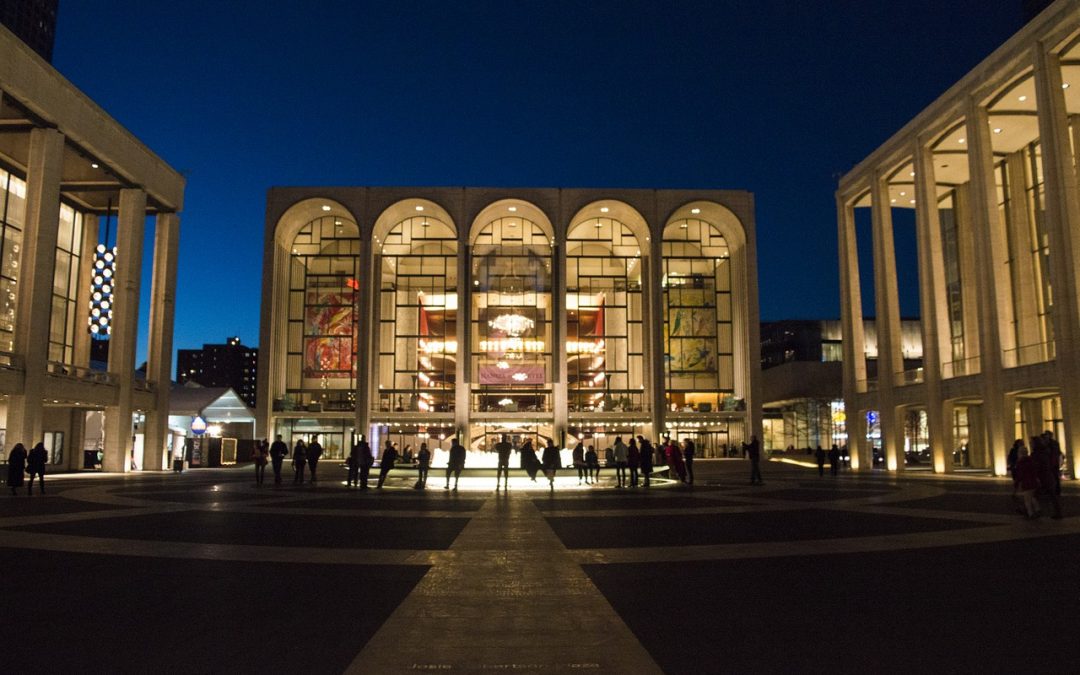
The Women’s Leadership Council: Helping to Democratize the Arts
Few endeavors are as rewarding and fun as my work with the Women’s Leadership Council.
This group of extraordinary business leaders and philanthropists have joined forces to raise money for the eight performing arts organizations and two educational institutions supported by the Lincoln Center Corporate Fund. These organizations include New York City’s most iconic and prized performing arts institutions: New York City Ballet, Juilliard, Jazz at Lincoln Center, New York Philharmonic, Lincoln Center, The Chamber Music Society of Lincoln Center, the Metropolitan Opera, Lincoln Center Theater, Film Society Lincoln Center, and The School of American Ballet. These cultural gems are emblematic of our great city, with some of the best programming, performers and educational offerings in the word.
The council was formed in 2013 and is comprised of women who are dedicated to preserving and enhancing the arts in New York City. Because the funds we raise are unrestricted, the entire Lincoln Center campus is given the freedom to use them to maximum effect, which involves developing high-quality, new productions on a regular basis, as well as furthering community outreach by offering free performances and more educational programming.
The Women’s Leadership Council marries many of my interests, including female mentorship, entrepreneurship, the arts, and community outreach. The Lincoln Center Corporate Fund is designed to embody the ideal of entrepreneurial and creative partnerships. Business leaders draw from their wealth of experience and professional contacts to raise awareness of the needs and challenges faced by the artistic community, and make a difference. This business support has been invaluable, ensuring that the city’s most influential performing arts complex continues to thrive and reach millions in its community outreach initiatives each year. The Council’s mandatory mentorship component also allows tenured inductees to guide Junior Council Members through the early stages of their careers.
And though it might seem nothing is better than watching a breathtaking performance that you helped to support, I’ve been most taken with the community outreach programs our efforts enable. These are programs that are either new or have greatly expanded as a result of the Corporate Fund’s work.
Juilliard has a robust program in place. The Juilliard for All program offers free online courses to youth and adults to help interested parties sharpen their musical skills or enhance their knowledge. They’re also opening free, live-streamed master classes to music lovers that otherwise wouldn’t have access to a world-class education.
The Metropolitan Opera transmits its live performances to movie theaters around the world. The current season includes 10 operas, which will be shown on over 2,000 screens in over 70 countries. They’re also bringing opera education into schools, offering affordable classes to the community, and hosting free talks and lectures to bring a greater understanding and appreciation of opera to a wider audience.
The School of American Ballet holds free, family-friendly auditions and lecture-demonstrations at community-based locations in the Bronx, Brooklyn, Chinatown, Harlem, and Queens. The Lincoln Center showcases weekly free performances and distributes discounted tickets. It also provides arts and education programs to over 80 New York area public schools, and presents special events and employment opportunities to US veterans. The New York Philharmonic Young People’s Concerts program helps children — from early childhood through to the teen years — grow up with music and explore musical topics through the repertory of all periods. And the list goes on.
Each one of the 10 organizations we support has a robust program designed to touch more lives, educate more minds, and spread greater opportunities. Maybe we’re creating more art enthusiasts. Maybe we’re allowing the next Misty Copeland her first whiff of inspiration and purpose. Either way, it’s amazing.
These organizations are actively strengthening New York, but their international presence means that the impact is global, too. The Women’s Leadership Council is proud to fuel their work. The Council’s female business leaders have spearheaded a unique and important avenue to give back. We expand our own business networks with other driven, socially conscious women, and we expand the reach of the arts, locally and abroad.

Charity Spotlight: Jewish Partisans Educational Foundation
Few charities have made as strong an impact on the lives of young Jewish Americans as the Jewish Partisans Educational Foundation (JPEF), which is why the Charatan Family Foundation proudly supports its laudable work. By changing the way the Holocaust is taught and discussed, the foundation is inspiring a new generation of Jews to address genocide, racism, sexism, hate and tyranny at home and around the world.
JPEF focuses on teaching educational and cultural organizations about Jewish partisans, those Jews who fought back against the Nazis during the Holocaust. Because so many people aren’t aware of the contributions of these courageous civilians, JPEF works to raise awareness about the 20,000-30,000 Jews who worked tirelessly to thwart Nazi efforts during World War II. Heroic partisans contributed to the war effort in many ways, including destroying thousands of armored convoys, procuring food and medicine, tending to wounded soldiers, sabotaging German communications and supply lines, sheltering/rescuing civilians, and saving countless Jewish lives.
Though Jewish partisans took many forms and operated across several European countries, most were regular teenagers who escaped the ghettos and work camps and joined organized resistance groups. Because they were uprooted from their homes, most groups survived by leading a nomadic existence within forests or urban undergrounds. Partisans employed numerous strategies, both violent and non-violent, to stymie Nazi efforts.
The foundation’s RESIST curriculum centers around changing our perception of the Jewish experience during the Holocaust. Designed for 6th-12th graders, the curriculum empowers students to understand the past more fully, while revealing opportunities for how to positively influence the world today. Hundreds of thousands of educators, institutions and private citizens around the world use JPEF’s materials, and it has reached over a million students since its founding in 2000. The organization works closely with Jewish schools, youth groups, summer camps, synagogues, Hillels, secular and parochial schools, and also influences educators through its partnerships with organizations like the United States Holocaust Memorial Museum, Facing History and Ourselves, Scholastic, Inc., the Illinois Holocaust Museum, the Museum of Jewish Heritage, and others.
JPEF produces a range of printed and digital materials that can easily be incorporated into Holocaust education programs, as well as World History, Ethics and English classes. Its website alone serves as the largest online resource for information about Jewish partisans, and brings together short films, video clips, 3D environments, curriculum resources, study guides, biographies, news media and interactive tools. All of these assets are available free-of-charge. The foundation also regularly provides teacher trainings and operates a speakers’ bureau.
When it comes to studying the Holocaust, the inclusion of all stories is essential. The story of Jewish partisans not only alters our understanding of the past, but provides models for resistance today. Fighting hate around the world is as important now as it was then, and with that belief in mind, we’re so pleased to support JPEF’s mission, and hope that with each passing year, more Jews draw insights and motivation from the past to transform the present.

Charity Spotlight: Samuel Waxman Cancer Research Foundation
The Charatan Family Foundation believes that access to superior medical care is a human right, and over the years we’ve been proud to support a variety of health and medical organizations that are addressing some of our most critical needs. Cancer research is so vital to so many of us, which is why we choose to fund the Samuel Waxman Cancer Research Foundation (SWCRF).
SWCRF finances cross-institutional research to help develop new cancer therapies and, ultimately, find cures. Not long ago, so much of this research transpired in silos, with researchers duplicating efforts. Thankfully, SWCRF has championed a collaborative approach, endowing researchers with shared resources and tools that develop cures faster. Researchers no longer need to repeat the mistakes of their peers, making our progress much more efficient. In order for scientists to receive funding, they must first agree to share study findings with SWCRF colleagues prior to publishing the results, so that insights can be viewed and acted upon right away. This commitment to transparency forces participants to prioritize collaboration above professional recognition, keeping the work centered where it belongs: the patients.
SWCRF focuses on both cures and prevention. By understanding how to identify and correct abnormal gene function, it’s helped fund breakthroughs within specific cancers, as well as better understand the biology of cancer so that treatments can effectively work for multiple types of diseases. The Foundation addresses numerous cancer types, but some of its largest areas of focus have been blood malignancies, breast, colorectal and lung cancers. It’s helped drive countless breakthroughs, including finding new therapies to better address liver cancer, breast cancer, leukemia, pediatric cancer, lung cancer, and more. Since its inception in 1976, it has awarded nearly $100 million to support the initiatives of over 200 researchers that work together across 60 research labs throughout North America, Asia and Europe.
SWCRF’s founder, Samuel Waxman, is an oncologist who has devoted his life to studying differentiation as a cancer therapy. He’s worked at Mount Sinai in New York City for over 40 years, serving as both a Division Head and Professor. He’s authored more than 300 scientific papers, several books, and helped found the International Conference on the Differentiation Therapy of Cancer. His work has greatly advanced our understanding of cancer and served as the foundation for a cure to acute promyelocytic leukemia. He’s one of New York’s finest, making lasting contributions locally and around the world, which is exactly what the Charatan Family Foundation strives to support: large-impact efforts that benefit New York City, our nation and the world.
Without our health, it’s impossible to stay engaged in our lives and be our best selves. It’s our hope that our ongoing support of Samuel Waxman Cancer Research Foundation allows more people to live longer, higher quality lives with safer and more effective cancer therapies at their fingertips. We are delighted to support an organization that does so much for our city and the world.

Travel with Purpose: Visit the Ukraine and Poland
Whether it’s your first visit or your fifth, The United States Holocaust Memorial Museum’s trip to the Ukraine and Poland will show you something you haven’t seen before. To develop a stronger foundational knowledge of the Holocaust is to face a sober reckoning with human nature. And yet, nothing is more fundamental. Whether we’re interested in tracing our familial ties, or our interests lie in the broader realm of confronting hatred and preventing genocide, an in-depth and in-person exploration of the Holocaust’s history is a great place to start. And, if you travel along with the US Holocaust Memorial Museum, your journey will include unprecedented access to locations and scholars unavailable to regular tourists or other group programs.
Jacek Nowakowski, Senior Curator for Collections at the Museum, will join us, as will Peter Hayes, Chairman of the Museum’s Academic Committee, Professor of Holocaust Studies at Northwestern University, and author of the recent book Why? Explaining the Holocaust. We’ll visit the actual sites where the Holocaust took place, trace the history and origins with Museum scholars and other experts, and discuss antisemitism in Europe today.
The trip will take place from May 26 to June 3, 2018. It begins in Lviv, Ukraine, with stops at the Janowska Labor Camp, Brygidki Prison, Klepatrow Rail Road Station, and several other sites. During our first days in Poland, we’ll see the Belzec and Majdanek Extermination Camp Memorials, the Warsaw Ghetto, take a curatorial tour of the Polin Museum of the History of Polish Jews, visit the Jewish Historical Institute, take a day trip to Treblinka, and more. Then it’s onto Krakow, where a sampling of activities include Kazimierz, the Galicia Jewish Museum, Oskar Schindler’s Enamel Factory Museum, and the Auschwitz-Birkenau Memorial Museum. We’ll experience all of this with local historians and scholars who can shed light on significant details at every turn.
The Museum is offering this opportunity to our supporters, many of whom have expressed interest in traveling with us. We’re accepting registrations on a first-come, first-serve basis. Trip costs are $6,150/person for double occupancy or $6,835 for single occupancy. Accommodations are top-notch, and trip costs include all meals, ground transportation, briefings by subject matter experts, public and private tours and entrance fees, and guide gratuities. Travelers are responsible for their own airfare and personal incidentals. Anyone interested in joining can contact Nadia Ficara for more information. Nadia can be reached at [email protected] or 202-488-0470.
If you’ve ever pledged to learn more about the Holocaust and are interested in traveling abroad, I hope you’ll consider this exclusive Museum offering. It’s a rare opportunity to visit sites that are typically closed to the public and contextualize one of history’s most horrific mass atrocities. As we’re all too aware, genocide isn’t relegated to the past. We can look to recent history in Rwanda, Srebrenica and Darfur to see that. Or the disturbing trends surfacing in Burma, Syria and Iraq right now. It’s never been more important to dig into the past to illuminate a better path forward for the future. Together we can raise awareness and strengthen global prevention.
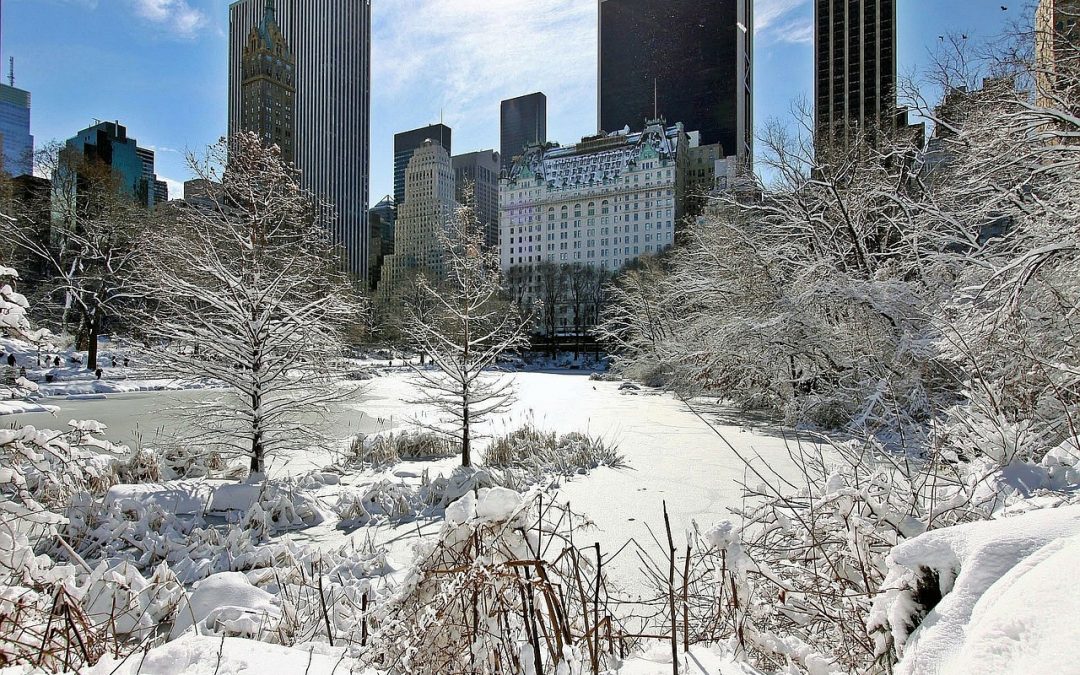
New York City’s Winter Wonderland, Central Park
The song Winter Wonderland may evoke scenes of a bucolic countryside for many but, as a lifelong New Yorker, Central Park is my wonderland in the winter.
The Park stretches about 50 blocks, spanning 843 acres from 59th Street to 110th Street between 5th Avenue and Central Park West. As an avid runner, I’m drawn to these paths for my chilly 6 a.m. runs.
Located at the southern end of the Park, the backdrop to Wollman Rink is a timeless view of New York’s blend of old and new architecture. As soon as the temperatures drop each year, usually mid-October, Wollman Rink opens to ice skaters young and old, experienced and novice. There is a fee to skate, even to be a spectator, and the rink is cash only. But it is, in my opinion, money well spent if you really want to experience winter fun at its best. Skating in the park, originally on the Lake, has been a tradition since it first opened in the 1850s.
All of the wonder that is Central Park in the winter is possible, in large part, because of the work of the Central Park Conservancy. In the 1960s and 70s, the Park was in a serious decline. A group of concerned citizens came together in the early 80s and formed the Conservancy. Today, that group is an official nonprofit and raises 75 percent of the Park’s annual budget. The Conservancy, under a contract with the City of New York, manages Central Park.
What does it take to manage a place that has more than 40 million visitors a year? The Conservancy website states, “Conservancy crews aerate and seed lawns; rake leaves; prune and fertilize trees; plant shrubs and flowers; maintain ballfields and playgrounds; remove graffiti; conserve monuments, bridges, and buildings; and care for water bodies and woodlands.”
In total, the crews protect and maintain not just the grounds, but over 150 acres of lakes and streams.
The Park really wouldn’t be the beautiful open space — the place to stretch and breathe and enjoy the changing seasons — without the Conservancy. That’s why I’m proud to help them through the support of the Charatan/Holm Foundation.
One thing the Conservancy doesn’t manage: the weather. Part of the idyllic winter wonderland is the snow, whether it’s flakes drifting around like a snow globe come to life or a sparkling white blanket covering the ground.
But New York won’t disappoint when it comes to the final details. The average snowfall in the city is 22 to 31 inches annually. So, while walking in Central Park this season, you can sing “Winter Wonderland” and then, quite possibly, do an encore: Let it Snow! Let it Snow! Let it Snow!
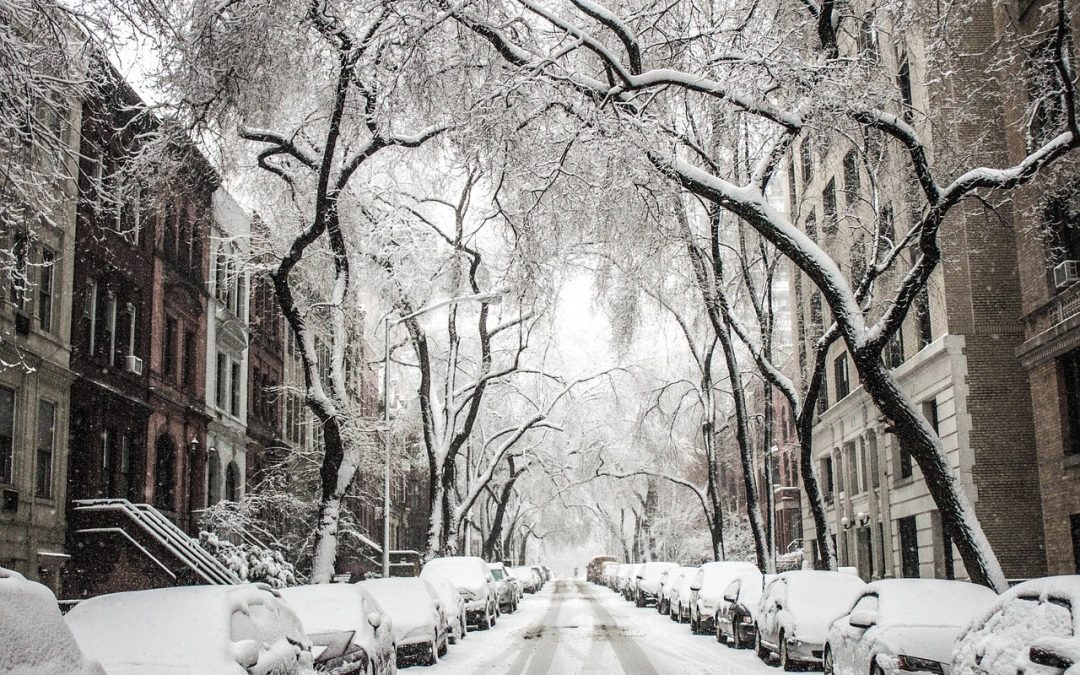
Holiday Charity Cheer, New York Style
December in New York City is absolute magic. It’s the month when the bright lights of this big city morph into menorahs and festive sparkles and opulent window displays.
But, the celebrations aren’t all consumer and shopper focused. The nonprofits and charitable organizations in New York know how to put on a show as well as (if not better than) the stores on 5th Avenue.
Here are a few of my favorites.
The World’s Largest Hanukkah Menorah Lighting will begin on December 12 and continue through Dec. 19. There are actually two that claim “world’s largest” fame, one on the Upper East Side at 59th and Fifth Street and one in Brooklyn at the top of Prospect Park. Each is about 32 feet tall, and are lit around sundown each night of the Festival of Lights.
The Charatan/Holm Family Foundation is committed to helping organizations that support Jewish culture, so it’s particularly nice to see such grand displays during Hanukkah.
Another organization that we support, Lincoln Center, where I serve on the Women’s Leadership Council, goes all-out for the holidays. They offer everything from ticketed concerts like Jazz at Lincoln Center Orchestra with Wynton Marsalis’ Big Band Holiday to weekly free events in the David Rubenstein Atrium.
This year there’s also a free exhibit entitled Winter Wonderland: George Balanchine’s The Nutcracker at the New York Public Library for the Performing Arts, Dorothy and Lewis B. Cullman Center, Plaza Corridor Gallery.
New York Botanical Garden has been putting on a Holiday Train Show for more than 20 years and it’s a delight to watch kids (of all ages!) interact with the artfully constructed cities and model trains.
The Met, another organization that we support, has a mix of music, art exhibits and even Medieval decorations (at the Cloisters) to choose from this holiday season. Plus, they offer foods that beat the winter weather chill, and are showcasing sugar and fondant sculptures at their restaurants and cafes.
As a volunteer for, and donor to, many of the arts and cultural organizations in New York, I have no problem making one more suggestion. Giving a membership to (or simply making a donation in honor of the giftee) one of NYC’s nonprofits is truly the gift that keeps on giving. I hope small cards that let people visit, engage, explore and delight in the magic of New York’s museums and cultural centers find themselves next to menorahs and under trees all over the city this year.